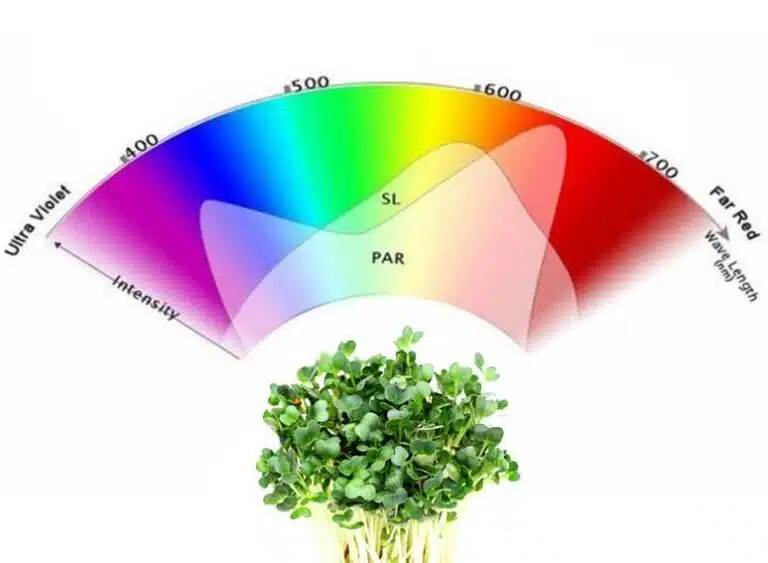Light is one of the most important energy sources for plants. Adequate amount and duration of light favours photosynthesis and promotes plant growth. In summer, this isn't a serious problem; but for autumn and winter days, light is generally insufficient for plants to thrive.
After some time, most plant growers have gained experience with many of the factors needed for healthy and strong plants. These include water, air, ventilation and light.
But one of the most important factors that is often overlooked by both new and experienced growers is the daily light integral (DLI).
I følgende artikel vil vi komme ind på hvad det betyder for dine planter. Og hvordan du beregner dine planter lysbehov ud fra den grow light lamp you have choices, both in distance and lamp switch on time. Read on and learn more about DLI...
Table of contents
ToggleDLI er en forkortelse for Daily Light Integral, og den er afgørende for planters vækst, da det påvirker deres fotosyntese og udvikling.
The scientific explanation:
DLI measures the sum of photosynthetic light (light in PAR range, 400-700nmwhich is beneficial for photosynthesis) that plants receive over the course of a full day (a 24-hour period).
The technical unit for DLI is 'mol-m²-day'. In other words, it tells you how many PAR photons are captured by the surface of plants in a 24-hour period.
PPFD (Photosynthetic Photon Flux Density) is known as the amount of photosynthetically active photons falling on a given surface per second. However, not only the light intensity, but also the duration is crucial for plant growth.
PPFD takes light output into account, but ignores the importance of the duration of the lighting time (for lamps, this is the time it is switched on per day). Therefore, DLI is more effective at calculating supplemental light for plants than PPFD.
The less technical explanation
Another way of looking at it is to see plants as "little buckets" that collect light throughout the day. The bigger, or the more light-intensive a plant is - the bigger you can imagine the bucket to be.
In this comparison, DLI corresponds to the size of the bucket. PPFD (brightness) translates to the tap that fills the bucket. The more litres per second coming out of the tap, the faster the bucket fills. Of course, there is a limit to how fast you can fill the bucket with light. If you try to fill the bucket too quickly, the plant can't absorb all the light and the rest of the light is wasted or damages the plant.
Why is it important to understand DLI?
Plants, like humans, need basic necessities to survive. From nutrient-rich soil and water to sunlight, most growers already understand how to grow and care for their plants. What you might not realise is how much of each of these things you need. You need to find the balance between not drowning your plants while also not letting them dry out. The same goes for light; if you have a grow light, you can't leave it on 24 hours a day as you'll burn the leaves and dry it out. On the other hand, you can't leave your plant in the dark all day either, as it won't grow. This is where DLI is useful. By knowing how much DLI your plant needs, you can maximise photosynthesis and grow them more efficiently.
Each plant species has different requirements for DLI depending on where they are in their growth phase, by understanding these needs you can customise lighting to achieve the best growth and productivity. By utilising DLI, gardeners can ensure that the plants they grow receive the necessary amount of light to achieve the highest possible crop yields.
Energy efficiency with DLI
By knowing how much DLI the plants need, you can make better decisions about when and how much supplemental lighting to add. This leads to more efficient energy consumption in relation to plant growth, thereby reducing the operational costs of artificial lighting.
Why is DLI useful for my plants?
Plants need light to perform photosynthesis. Without pulling too many memories from school biology lessons, it's the process by which plants convert light, water and carbon dioxide into sugar and oxygen. This is how plants grow, they use the sugar they make to build more mass. By optimising the number of light photons hitting your plant, you optimise the growth rate of your plant.
Find your plants' DLI needs
All plants need light to grow, but some need more and some need less to thrive. So it's a good idea to find out your plants' PPFD and DLI needs:
You can find information about DLI requirements in books, scientific articles or from credible online resources. If you can't find exact DLI values, you can get a general idea of whether the plant requires low, medium or high light.
DLI for tomato cultivation
When growing tomatoes from tomato seeds Inside, light is a very important factor. And the light requirements of tomatoes change with the growth phase they are in and the temperature. A quick search on the web reveals the following information:

From the post, you can see several different numbers:
For sprouts
- PPFD from 150 to 350
- DLI from 8am to 6pm
For growing plants
- PPFD from 350 to 800
- DLI from 22 to 30
Here's the question, why is there a range for both PPFD and DLI?
The answer is that the hotter it is, the greater the tomato's need for PPFD (brightness) and DLI (light quantity). Below are guiding recommendations:
Pre-germination of tomatoes:
- The first phase is seed germination at 21-24ºC It's a misconception that tomato seeds need light to germinate, this is not correct!
- The second phase is growth, where the temperature should be around 18-20ºC, and min 15ºC during the day. Here the light requirement at 15ºC will be PPFD=150 & DLI=8. If the temperature rises to 20ºC or more, the light requirement increases towards PPFD:350/DLI:18, and then growth is very fast!
Growing tomatoes
- For growing plants, the need increases greatly if they are to set fruit and the temperature is very high (Greenhouse): PPFD:800 / DLI:30. Supplementary lighting is needed here, as is often the case with professional greenhouses.
So, that's why you should assess the growing conditions when choosing light supplements: Consider factors such as temperature, humidity, CO2 levels and nutrients in your growing area. These factors can affect the DLI needs of the plant and should be taken into account.
Calculate DLI for your plants
To calculate DLI, you can use the following formula:

Before you get bogged down by it, we've created some online calculators here, so it's easy to do the maths yourself:
PPFD (umol/s/m2) to DLI (mol/day) calculator:
Use this calculator if you know the PPFD (umol/s/m2) of your lamp at the distance it is from your plants - found on the lamp's website/datasheet. And you know how many hours your lamp is switched on each day. Then find out how many DLI (mol-m-2-d-1) your plants receive every day.
Time (Timer):
Result: ?
Shade plants require a DLI between 5-10, semi-shade plants 10-15, and sunlight plants will require more than 15.
PPFD (umol/s/m2) for switch-on time per day
Use this calculator if you know the PPFD (umol/s/m2) of your lamp at the distance it is from your plants - found on the lamp's website/datasheet. And you know how much DLI your plant needs (can be found online for your plant variety). Then find out how many hours your lamp should be switched on each day.
DLI (mol/day/m2):
Result: ?
DLI (umol/s/m2) to PPFD
Use this calculator if you don't know how much PPFD you're getting. But know how much DLI your plant needs (can be found online for your plant variety). And you know how many hours the light is switched on. Here you will find the PPFD.
Time (Timer):
Result: ?
Choose the right grow light for your plants from DLI
DLI is also crucial to your choice of plant grow lights.
If you want to germinate or grow plants indoors, it's important to choose a grow light with a suitable PPFD strength that can provide the necessary amount of light to maintain optimal growth in your plants. At the same time, the lamp should not be too powerful for your needs, as lamps cost more the bigger they are. Before choosing a light, you should consider the following:
- Too little light and your plants will stretch and become spindly.
- Too much light and you waste energy, and in the worst case scenario, it can burn your plants.
- The growth phase, which growth stage should you use the light for?
- The higher the temperature where you grow your plants, the more light you need.
- Other light, e.g. the window or in the greenhouse?
- The area to be illuminated, remember plants get bigger as they grow, so they take up a larger area. A dimmable lamp can be a great advantage here, as it saves more power.
Is there a perfect DLI for my plants?
The short answer is no. Plants are very different and thrive in different circumstances. Nature is the best example of this, as there are very few ecosystems where plants don't exist. Even in the harshest environments like deserts, plants like cacti thrive. So luckily, you don't have to create perfect conditions for your plants to thrive.
Some of the things that can affect your plants' need for DLI (Energy) are:
- Plant typeDifferent plant species have different DLI requirements. Some plants require higher DLI values for optimal growth, while others thrive better with lower values.
- Growth stageA plant's DLI requirement can change over time, depending on the stage of growth. In general, young plants and seedlings have lower DLI requirements than more mature plants that are in the growing or flowering phase.
- TemperatureTemperature in the growing area can also affect a plant's DLI requirements. Higher temperatures can increase a plant's metabolic activity and thus required DLI, while lower temperatures can reduce the need.
- CO2 levels: An increased concentration of CO2 in the growing area can increase the plant's ability to perform photosynthesis and thus increase its DLI requirements.
- Humidity: High humidity can reduce a plant's evapotranspiration and thus reduce its DLI needs. Conversely, low humidity can increase a plant's water loss and thus increase its need for light.
- Nutrients: Nutrient deficiencies or imbalances can limit a plant's ability to perform photosynthesis and thus affect its DLI requirements.
- Cultivation methodThe growing method, such as soil-based or hydroponic, can also affect a plant's DLI needs. Hydroponic systems can increase the plant's ability to take up nutrients, thus increasing its need for light.
Other sources
- Read more about DLI here
- Find PPFD & DLI for your plants here
- Fluence Photobiology Guide
- Hydroponic Illumination & the Daily Light Integral
- Photosynthetic and biochemical characterisation of in vitro-derived African violet
- Plant Light Database
- Target PPFD for Orchids and Tropical Plants
- Improve culinary herb yields






